2023 White Paper on the Rise and Challenges of China's New Consumer Brands
The following article comes from Changsha New Consumption Research Institute, and the author is Changsha New Consumption Observation Group
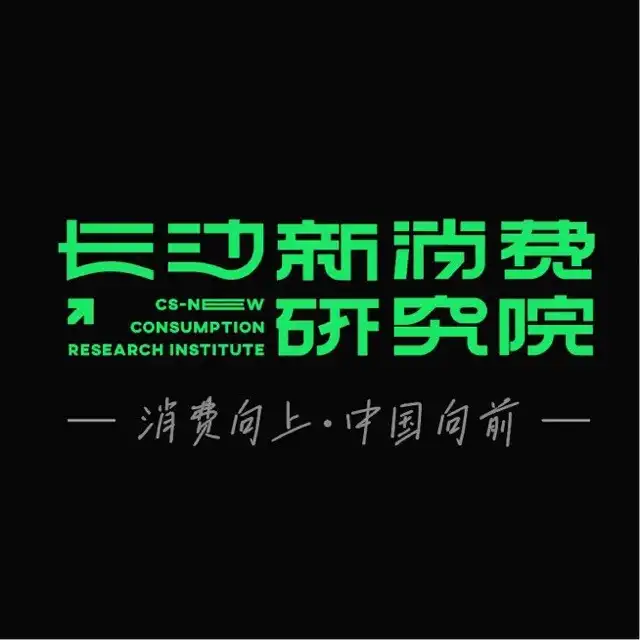 Changsha New Consumption Research Institute.
Changsha New Consumption Research Institute.
Changsha New Consumption Research Institute takes the vision of "Consumption Up·China Moving Forward", focuses on the three functional orientations of "industrial research, enterprise consulting and investment incubation", and uses the value concept of "co-creation, symbiosis and sharing" to gather new consumption industries. Academic, enterprise, capital, platform and other resources are committed to promoting the high-quality interactive development of cutting-edge theories and industrial practices in China's new consumption industry.
Today, no one doubts how amazing the potential energy that a new Chinese consumer brand can unleash is. Founded in 2017, Ruixing Coffee has now become the first choice for many people's coffee consumption. In 2023, the Maotai-flavored latte it jointly launched with Moutai has become a rare phenomenal hit in the consumer field. New car-building forces represented by "Wei Xiaoli" have spread all over the streets of major cities and have shaken the status of traditional car companies in Europe, America, Japan and South Korea.
In the Singles Day holiday last year, young Chinese new consumer brands also achieved excellent results. For example, Banana, which was founded in 2016, topped the list of lingerie stores, while ubras, which was also founded in 2016, ranked second. In the sales list of small household appliance brands, Hunting, which was founded in 2017, ranks third, followed by Tenco, which was born from Corvos in 2018. Caitang, which was founded in 2014, ranks second in the industry after Huaxizi, founded by YSL; in 2017, in the list of cosmetic brands. Although it became controversial over the live broadcast of Li Jiaqi in September 2023, it still ranked ninth in sales-Huaxizi was once the double crown of Tmall and Douyin in the 618th promotion of 2023. In recent years, with the rapid development of China's economy and the prosperity of social construction, people continue to put forward new requirements for a better life. In 2014, with the rise of the upsurge of "consumption upgrading", a large number of new brands were born, which reshaped the market pattern with new consumption concepts and brought new experiences to consumers. The era has given the opportunity for brand development. In just a few years, we have seen many brands come to the fore and stand at the top of the industry. But at the same time, it must also be noted that some brands in the rapid growth and rise, because there is no solid foundation blindly forward and labor pains. There is no doubt that the new consumer brand born with halo has enough room for growth to stand on the world stage. But how to give full play to their advantages, enhance their strengths and circumvent their weaknesses, and let themselves move from popularity to prosperity, the new consumer brand obviously still has a lot of lessons to learn. At the same time, we must also see that in order to provide a better soil for the growth of consumer brands, local governments should constantly keep up with the new pace of enterprise growth in the new era in terms of urban construction and business environment. Based on this, China Finance and Economics and Changsha New consumption Research Institute jointly launched the 2023 White Paper on China's New consumption, which provides insight into the rise and promotion direction of new consumer brands from the perspectives of brand, industry, crowd and urban development. to help China's new consumer brands grow healthily.
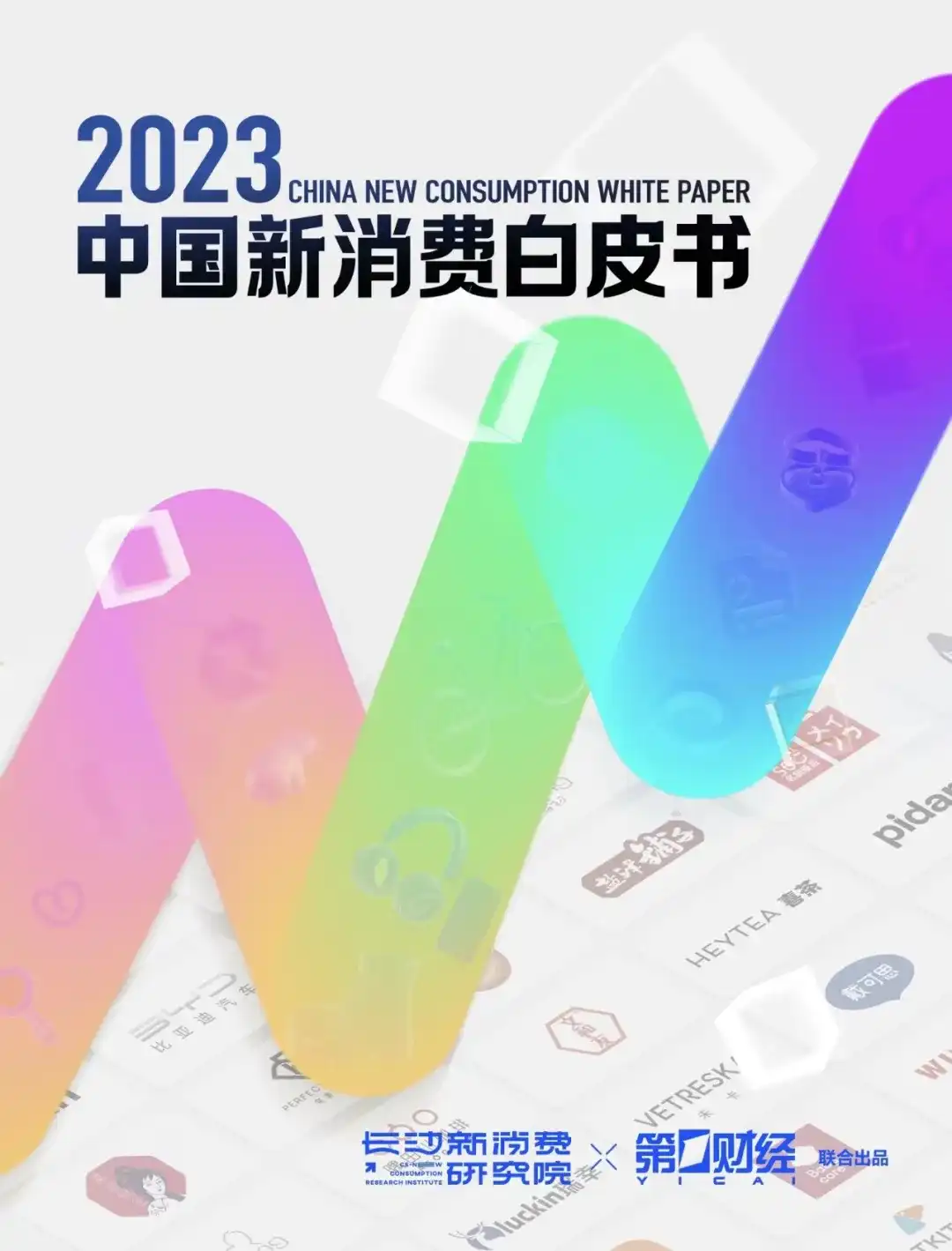 第一财经 x 长沙新消费研究院 《2023中国新消费白皮书》
第一财经 x 长沙新消费研究院 《2023中国新消费白皮书》
**
Understand what new consumption means?** According to the "Guiding Opinions on Actively Giving Full Play to the Leading Role of New Consumption and Accelerating the Cultivation and Formation of New Supply and New Driving Forces" issued by the State Council on November 19, 2015, new consumption is based on the upgrading of traditional consumption and the vigorous rise of emerging consumption. Among the new consumer brands we are talking about today, the so-called new can be defined from multiple dimensions: Including new technologies, new services, new marketing, new channels, new manufacturing, new images, and new species.
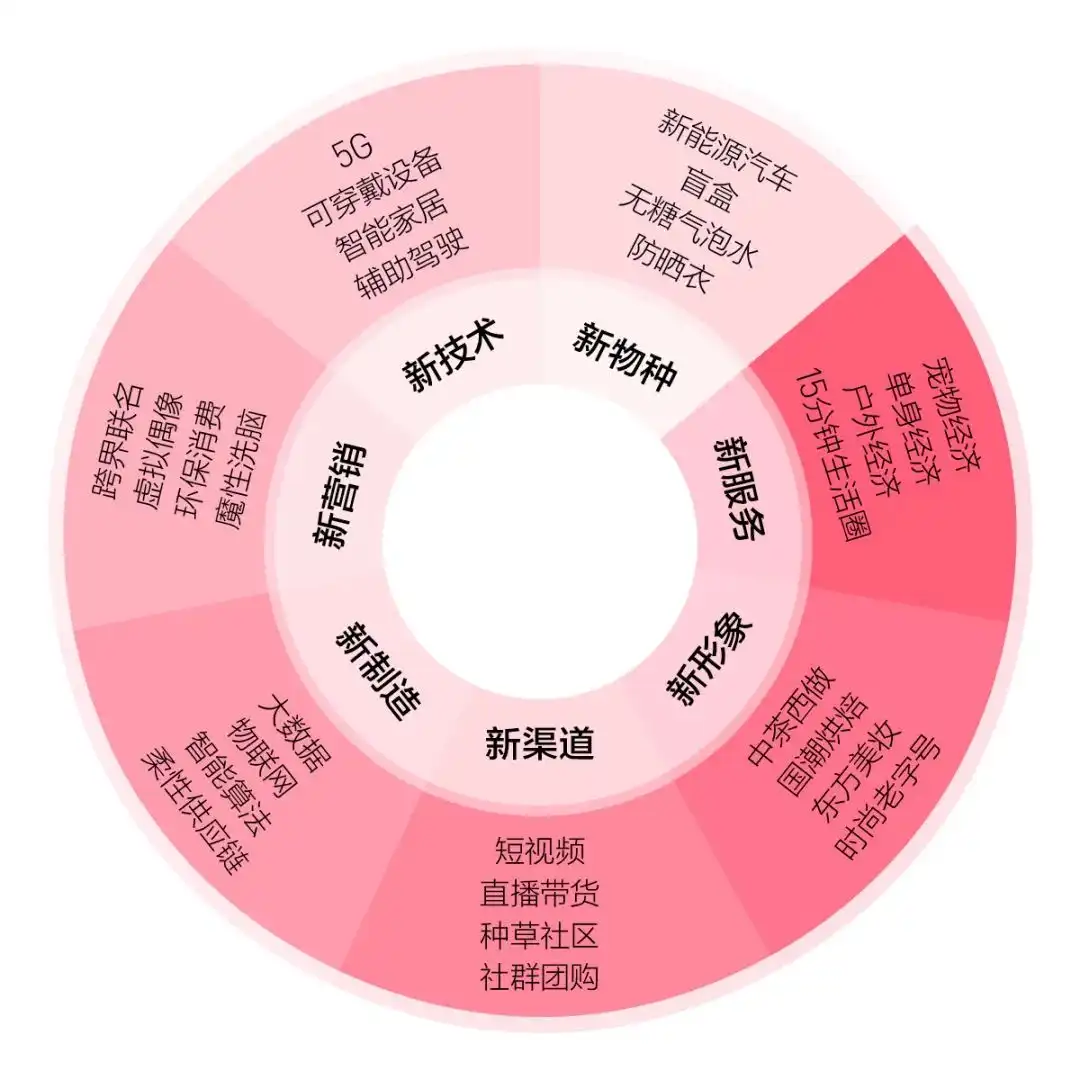
The scale and number of new consumer brands are as vast as clouds, and the tracks they operate on are complex. It is not easy to measure the development trajectory of new consumer brands in general terms. In order to understand the development trends of new consumer brands more quickly and intuitively, we selected 18 categories from the seven major scenarios where people consume the most frequently in daily life, such as catering, food retail, clothing, beauty, electronic consumption, lifestyle, and new energy vehicles. According to multiple dimensions such as market performance, brand awareness, and innovation, we selected 261 representative new consumer brands that emerged after 2010 as samples for research. **
Outstanding characteristics of the new consumption city **"New consumption city" is not an easy title. It first needs to be fertile soil enough to breed a number of new consumer brands rather than a few. At the same time, it must be a market with strong consumption support. Whether locally born brands or foreign new consumption formats, young people here flock to it and form a complete closed loop with its supply side. For new first-tier cities such as Hangzhou, Changsha, and Chengdu, the birth and grouping of more than 10 new consumer brands, as well as the appeal and appeal of young consumption released by the whole city, make them well-deserved "new consumer cities."


新消费之城的突出特点包括三个方面。First, it must include positive interaction between vibrant cities and young people. 年轻消费者追捧品牌,带动着品牌诞生所在的城市,从商业主流视野的边缘地带跃出,同时,新消费品牌之间相互抱团,也与城市发生着良性互动。 Second, the cities where new consumer brands are born are also the cities with the largest scale of new consumption ,集中诞生的新消费品牌也为其所在城市提供了更广泛和聚集的消费选择,壮大了城市本身的消费体量。此外,在诸多新消费之城的周边城市,新消费品牌门店数量也明显多过其他同级别城市,相比传统的商业资源下沉比率,这些城市在当前阶段呈现出明显的新消费品牌占领优势。 **
Opportunities and Challenges for New Consumption Opportunities Chapter:** Economic development is the fundamental driving force for the birth of new consumer brands. Over the past 20 years, China's GDP has ranked among the world's leading levels, China's urbanization rate has continued to increase, and the disposable income of China's urban population has steadily increased. An affluent life gives people more consumer needs. China has a huge population base and the size of "one billion consumers" that is envied by global consumer brands, giving brands sufficient market space.
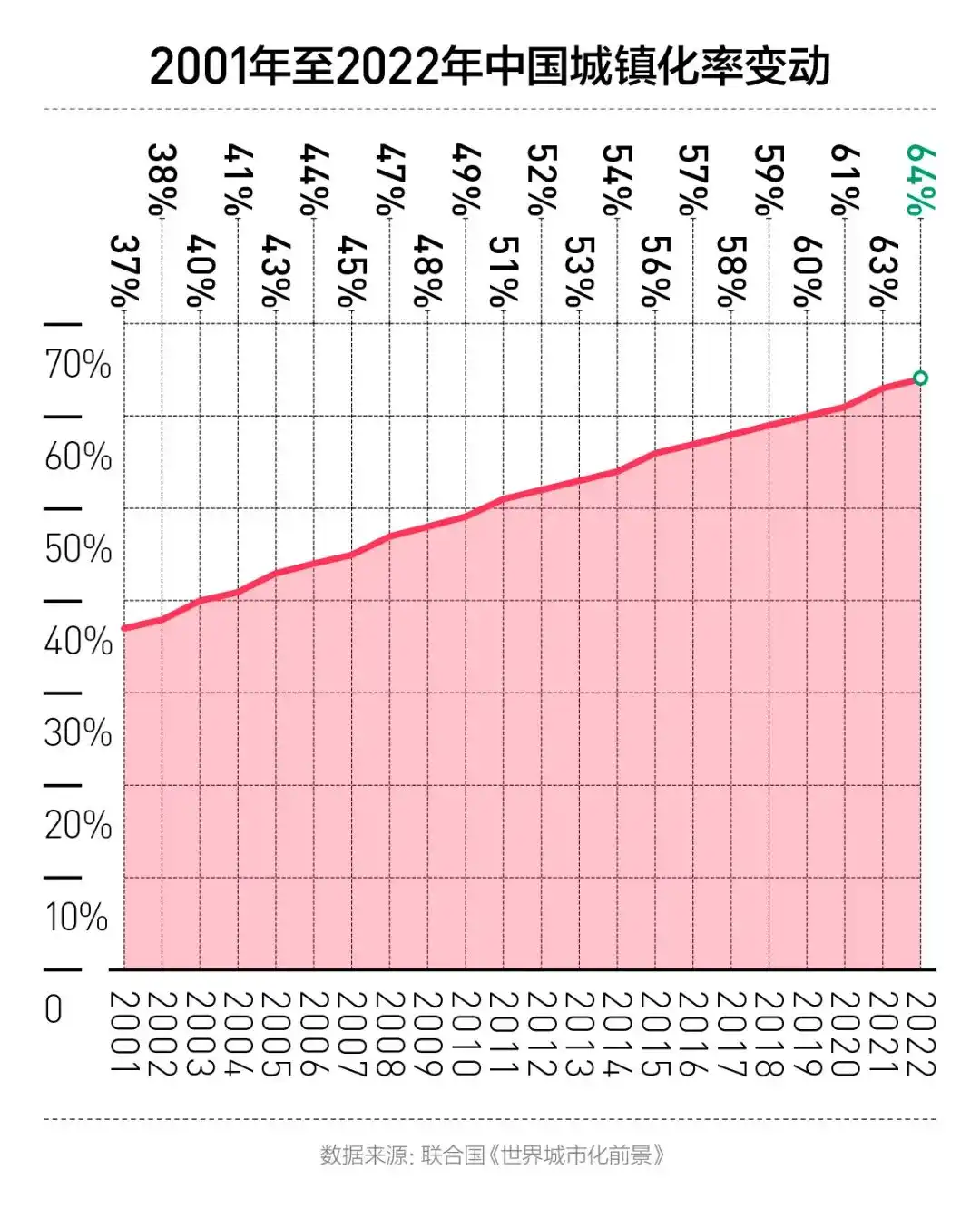
而中国新消费品牌之所以能够实现快速成长,得益于以下几个方面:The first is that China's manufacturing industry has developed mature. 生产制造是让产品从想法到落地最重要的环节。今天,凭借丰富的制造产业集群和健全的代工体系,要创造一件商品早就无需从头搭建生产体系。元气森林、三顿半等著名的新消费品牌在创立之初便都是依托于代工厂起步。 如果细究近些年来诞生的新消费品牌,其品类分布情况与各产业带分布情况高度契合。例如造车新势力都诞生于汽车产业聚集、有著名汽车集团总部驻扎的北上广、重庆、湖北、浙江等地。美妆新国货则大多聚集于上海、杭州、广州的日化、美妆产业带周边。而小家电则主要聚集于广州、苏州的电子制造产业聚集区。 新消费品牌的出现并非无序生长,它们大多借助优势产业带、站在巨人肩膀上借势而起。Secondly, there is a abundant talent reserve. 改革开放、加入WTO之后,大批国外领先企业来到中国发展,也推动了本土市场企业管理创新人才的教育和积累。 在近几年快速成长的新锐品牌中,可以看到不少年轻创业者、跨界创业者开辟的一片新天地。这些创业者大多集中于三个身份背景:外企中的“黄埔军校”、头部互联网公司、成熟的中国制造品牌。在成熟公司的工作经历帮助这些创业者在公司运作、品牌管理、营销企划、电商运营、数字化管理、消费者洞察、审美塑造等一个或多个方面积累了成熟的经验,并且具有了与国际一流品牌同步的品牌视野和思维能力。 另一方面,风投机构、孵化器在消费赛道的活跃,也给创业者的成长和经营提供了有效的保驾护航。**第三是数字经济的发展为新品牌提供了打破格局快速成长的平台。 **2003年,阿里巴巴创立淘宝,自此,普通大众有了借助网络创立自己品牌的机会。随后,网络购物兴起 、社区种草 、直播带货盛行 ,一波波新的线上营销潮流兴起,不断给消费者更新的消费刺激,也重塑了品牌的话语权格局。 三顿半、蕉内、蕉下等都是从线上兴起的品牌,在收获高流量、形成一定国民度后,才逐步进入线下市场。 另一方面,所谓的擅长数字化不仅仅是懂得使用电子商务的营销工具,更重要的是对产品运作全链路的数字化管理,通过大数据和智能分析, 做到从原材料供应、生产制造、物流运输、线上销售、售后服务全链路的精细化管理与动态管理。 由此,这些新的品牌管理者带着对消费者需求理解的新观点,借助新手段,通过新平台,一大批颠覆以往消费认知的新物种开始出现。这些前所未见的新物种迅速占领消费者心智,打破了传统大牌构筑多年的壁垒,挑战了行业话语权。 Challenge: 短时间内的快速崛起容易给年轻的品牌带来错觉,从而盲目自信,忽略品牌生长的客观规律。由于基本功不够扎实,近年来我们也开始看到一些瞬间崛起的明星品牌在爆红之后出现可持续生长动力不足的情况,一些品牌在发展几年后前景方兴未艾,另一些品牌则直接陷入了倒闭困境。《2023中国新消费白皮书》指出,不少新消费品牌在从网红走向长红的过程中,仍有许多功课需要弥补。目前,可以看到那些走在前面的品牌已经开始以下的补课: The first is to build a self-built production and supply system. 代工体系虽然帮助了三顿半、元气森林的崛起,但当品牌开始做大后,品牌也开始逐渐意识到,单单依靠外部力量不仅无法保证足够的产能,令销售与生产脱节,还有可能受制于人,令经营陷入被动局面。因此,自建工厂、物流,搭建属于自己的生产供应体系成为了头部新消费品牌的必修课。这样除了能够保证生产供给,规模化生产也更有助于摊薄成本。 The second is to look for talents upward. 不少新消费品牌来自非一线城市,如喜茶来自江门,三顿半来自长沙。但当企业扩大到一定规模,需要面对更为庞杂的市场,面对更为复杂的竞争后,自然而然需要获取更多优秀人才,于是向一线城市迁移、向上寻找人才成为了来自非一线城市新消费品牌发展的普遍规律。 但从长远来看,来自非一线城市的新消费品牌在做大之后,若能用自身魅力吸引更多人才来到自己的城市,或许会成为人才流动的一个新驱动力。当然,在人才吸引这个大命题上,更多的工作还需要城市管理者去执行。 The third is to restructure the price system. 撒券、促销,曾经是新消费品牌在短时间内获得高增长的王牌。完美日记就是借助这一方式快速崛起,甚至卷动整个美妆行业进入大促潮的新消费品牌。不稳定的价格体系短时间内或许会拉动销量,但长期来看对品牌无益。完美日记的母公司逸仙电商在短时间内完成上市后,泡沫破裂,股价一度不振。创始人黄锦峰在接受媒体采访时反思,称完美日记早期的流量打法对品牌有些伤害,公司在去年已开始对品牌、产品做出调整。从近些年618、双11大促以及日常各类品牌活动中不难看出,许多品牌开始放弃无止境的促销补贴,转而重构价格体系。 除了上述新消费品牌目前已经有意识开始补课方面,《2023中国新消费白皮书》提出,新消费品牌仍有许多方面需要补课。The first is to improve the human resources system. 对于企业来说,人员的混乱是致命的。对于渴望向上发展的企业,最重要的是梳理好公司的人力资源架构,从最基本的劳动保障到完善的薪酬、培训、晋升体系、企业价值观传递等方面,全面打好基础。 The second is to improve sales channel channels. 虽然新品牌可以借助线上平台快速崛起,但实体产业始终有其必然规律。从低线城市向高线城市进驻,从高线市场下沉到低线市场,或许需要面对完全不同的经销商体系,消费者的消费场景习惯也不尽相同。有一些“脏活累活”,是绕不过的课题。 The third is to build a deeper moat. 新消费品牌需要时刻提醒自己,今天靠弯道超车获得的优势,可能很快就不复存在。例如美妆领域在直播电商兴起初期依靠超头主播和打价格战起势,但很快一线品牌也开始如法炮制,它们的资本不但雄厚,而且更为充足。
**
**
Understanding new groups 今天的消费者比以往任何阶段都更具有消费欲,人群画像也比过往任何时期都更为复杂。宏观环境、政策影响、人口结构变化、技术变革,每一个世代的消费者都和过去人们的常规认识有所不同。对于品牌来说, 更具前瞻性地看到消费者特征变化,对布局未来影响深远。《2023中国新消费白皮书》基于各项数据研究,分析了未来老中青三代消费者的新特点新变化,帮助新消费品牌更好规划未来,谋定而动。在未来,新消费品牌将面对的是这样一群消费者: There are few and many children2022年 ,中国人口自1961年以来首次出现负增长。2023年的新生人口预计将低于900万。低生育率已经成为一个需要直面的现实问题。
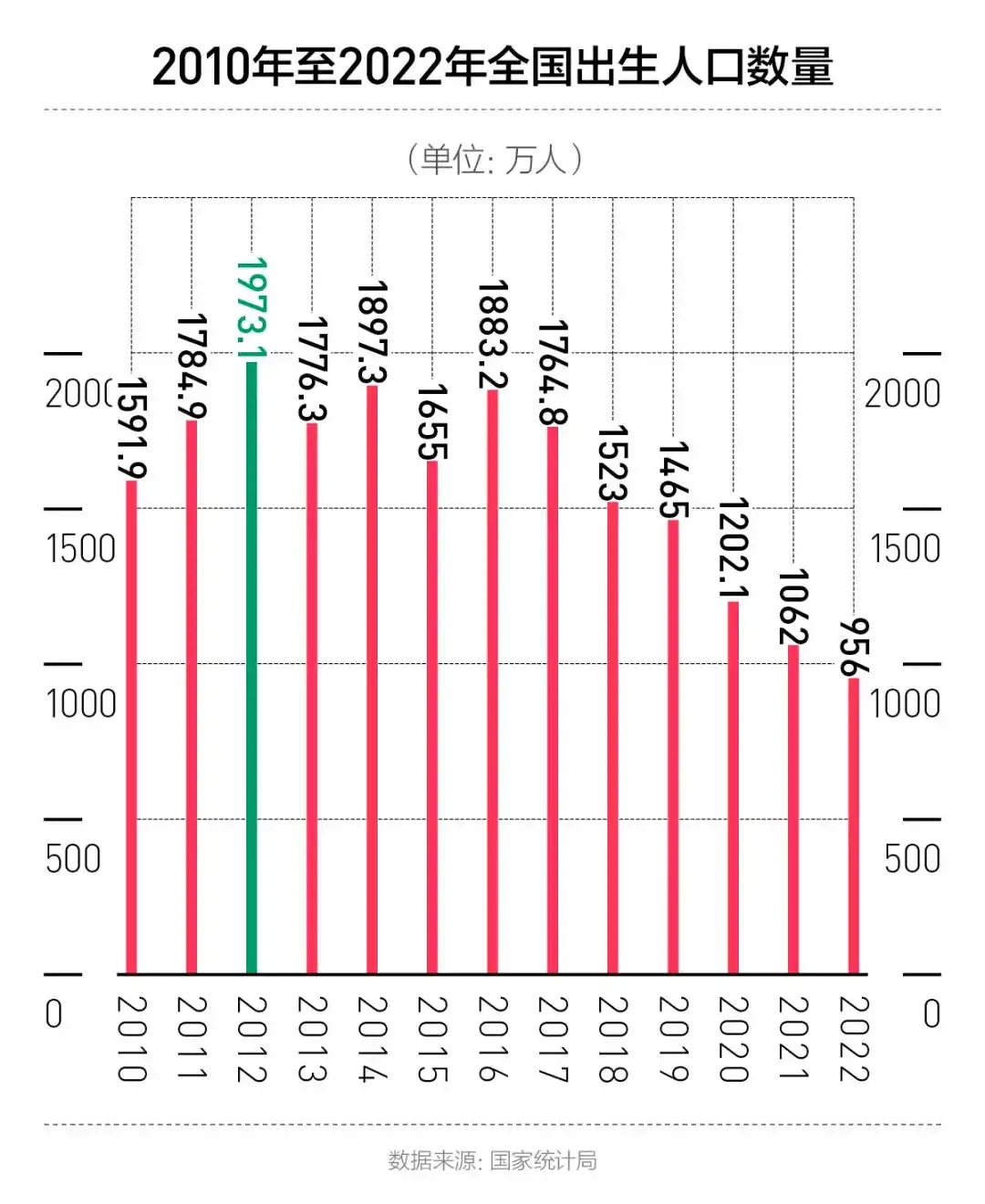
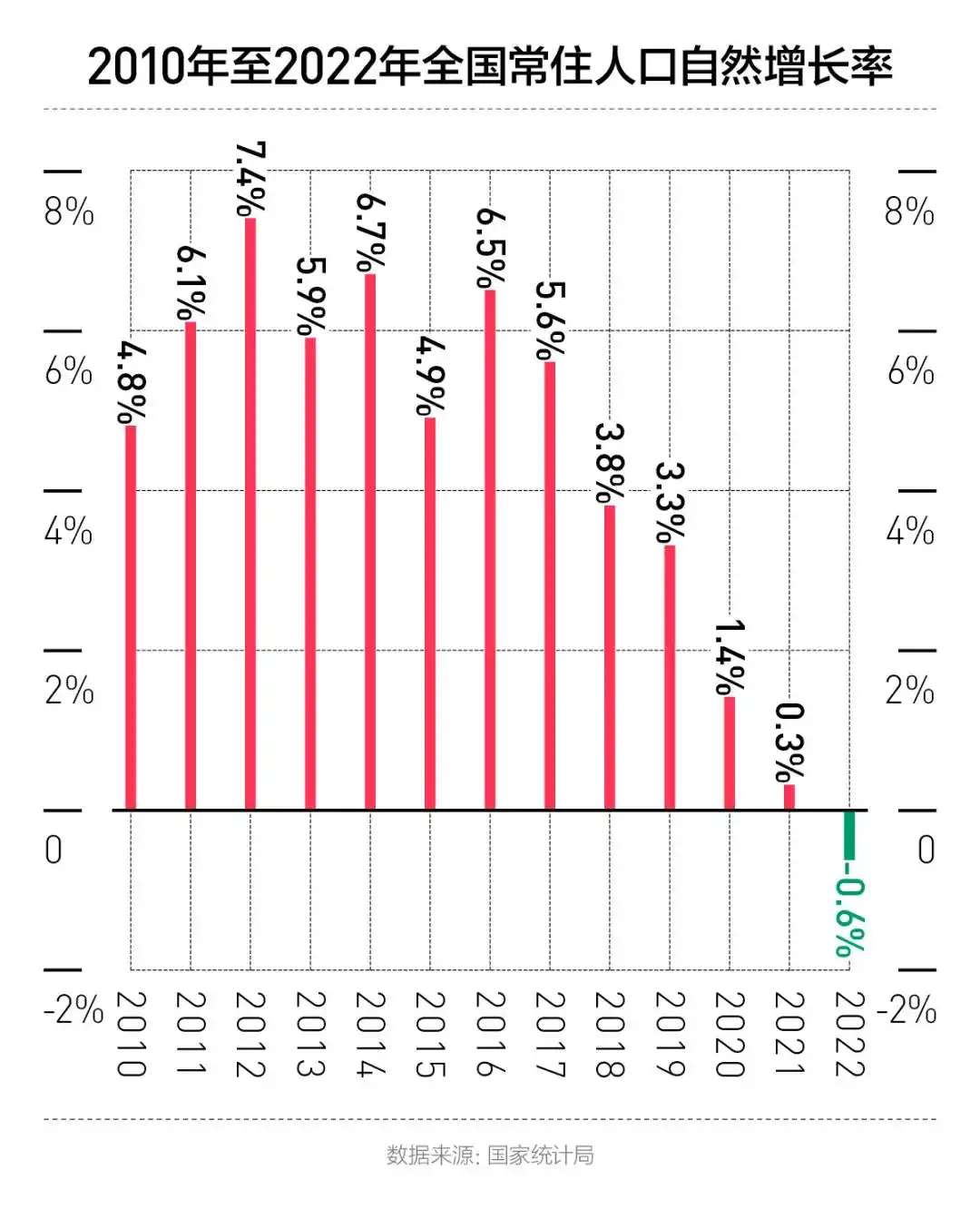
But the reality is far more complicated than this. Although the overall birth population has decreased, since the promulgation of the three-child policy, the number of children in some families has increased from one to three. The cost of family childcare is actually much higher than the post-80s and 1990s growth period. But for parents, childcare expenses are not simply doubling math problems. Therefore, the infant and youth market cannot use price increases to promote growth across the board in response to the reduction of the total birth population. It is necessary to more closely grasp the customer needs of high-line cities and low-line cities, and gain insight into one-child families, two-child families and three-child families. Different consumption needs and pricing space.
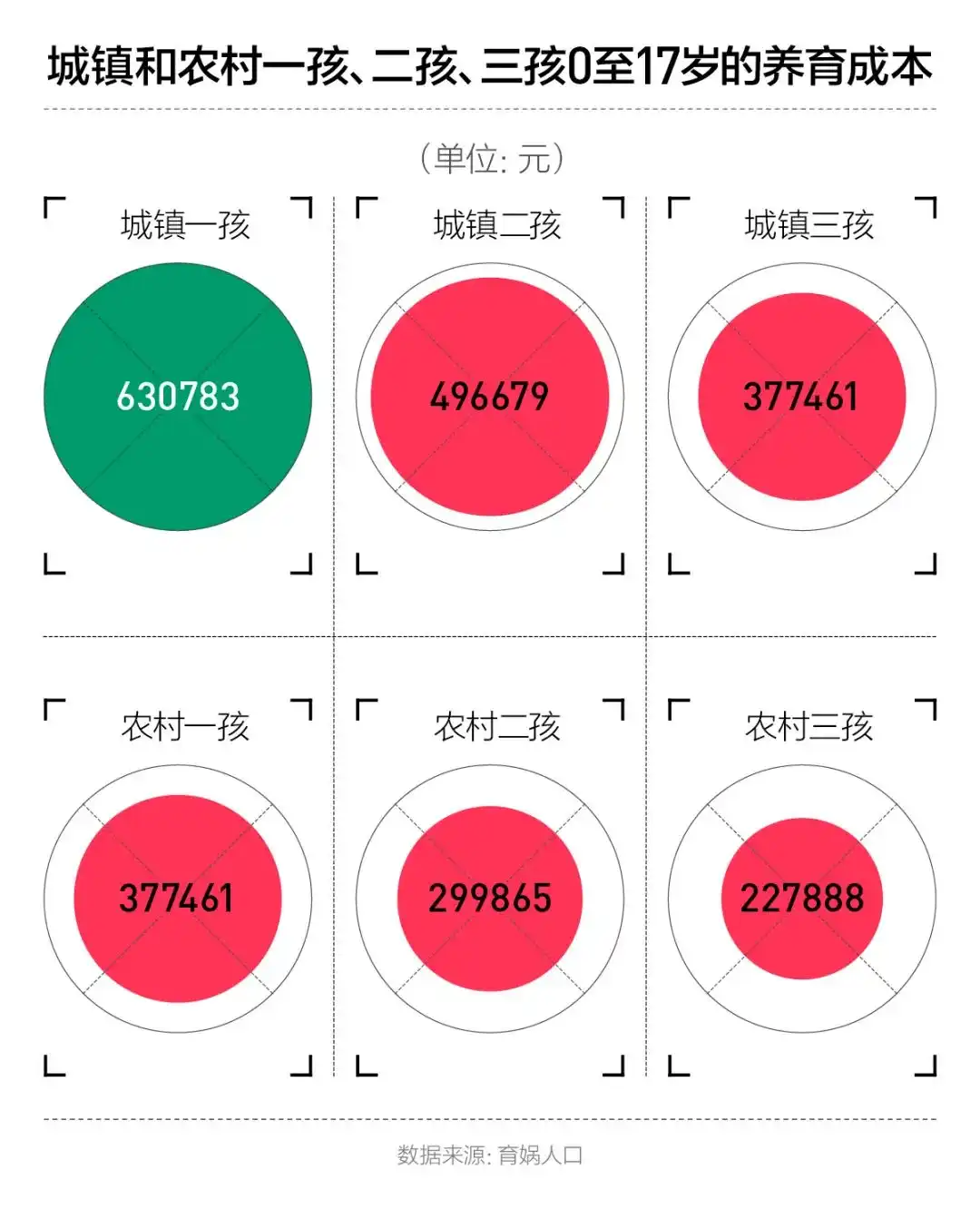
另一方面,从长远来看,人口是影响经济发展的重要因素。因为随着新生儿数量减少,依靠人口红利而起的整个消费行业在未来都将遭遇消费者减少的客观情况。而今天尚未直接被少子化冲击的行业也应适时筹谋应对人口下降的长远规划。 Young people are poor and rich 年轻一代消费者和他们的父母、长辈相比,确实生活在更优渥的环境中,从小接触的物质也更为丰富。作为网络原住民,他们的购物体验也更为丰富、便捷。然而,盲目认为年轻一代的消费升级是指愿意用更高的价格购买更好的体验,并不可取。从历年的社交网络热门词汇便可看出,年轻一代不 仅精打细算,甚至省钱有道。2022年夏天,他们吐槽 “雪糕刺客”,质疑高价雪糕;2023年疫情管控放开后,他们开始热衷当“ 特种兵”,热衷拼多多、好特卖等低价购物渠道。
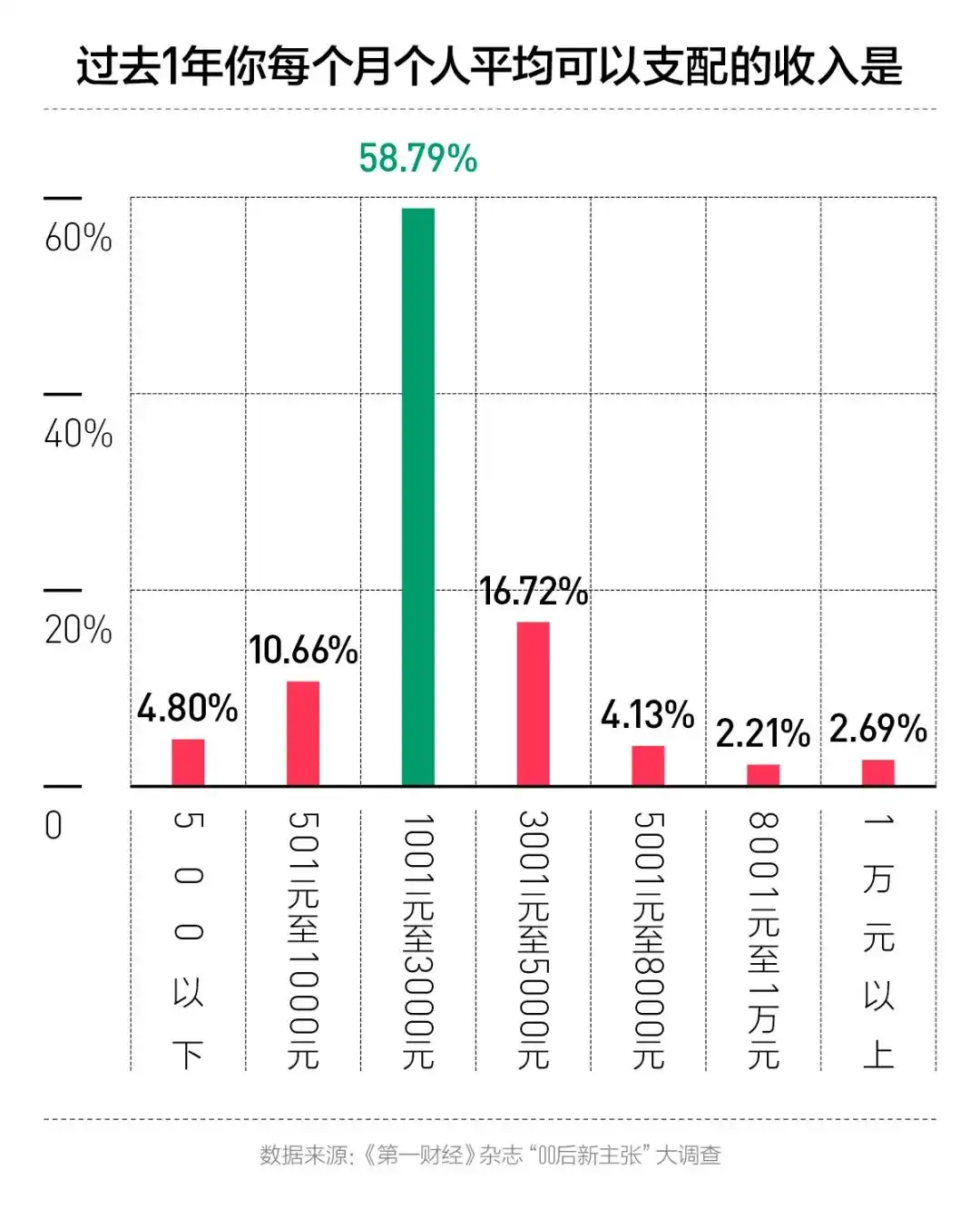
At the same time, as Internet aborigines, they can use rich information resources to scan shopping reviews, and the analysis of "constituent parties" and "evaluation parties" has become one of their natural shopping behaviors. Therefore, the way they evaluate a product is more complex, arguing that "you can buy expensive, but you can't buy expensive", making it more difficult for brands to impress them. To a certain extent, they have become a contradictory unity that not only uses consumption to please themselves but also hates consumerism. Under this unity of contradictions, the younger generation of consumers has put forward more stringent requirements for consumer brands.
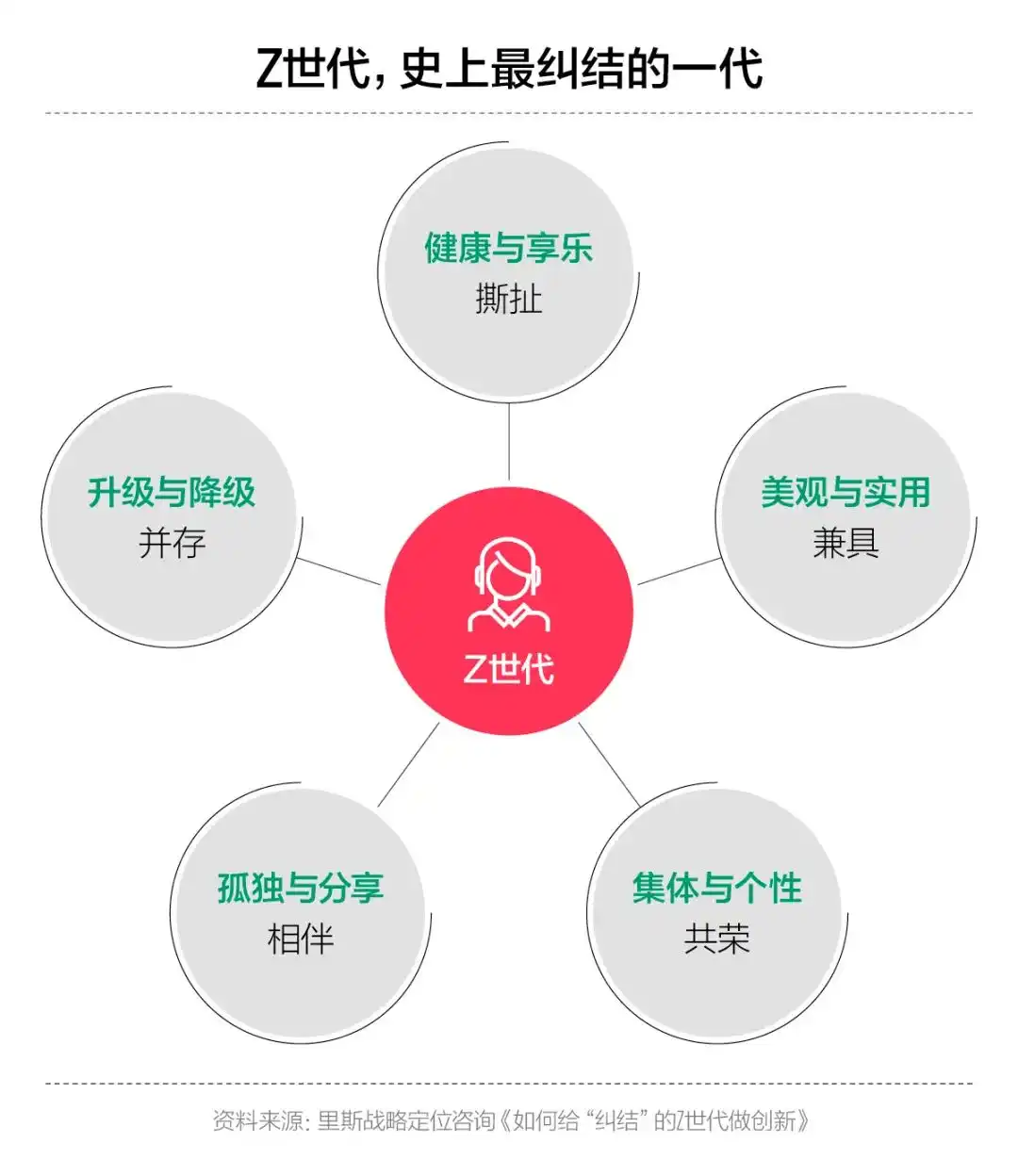
The silver-haired people are old and young在2018年发布的《2018新中产白皮书》中, 70后在总体新中产人群中的占比为20.51%,80后 为54.01%。到2030年,70后将陆续迈入60岁, 也就是目前广义上的退休年龄,成为新一代银发族。但显然,这一代人和过去传统意义上的老年人已大不相同。70后从小学起就已经进入改革开放时期,贯穿于他们生活的主基调是发展和向上。由于已经恢复高考,他们中受过高等教育的比例也较前几代更高。同时,他们也是较早接触互联网, 并顺利接轨移动互联网的一代人,对在线消费、电子支付、O2O等新兴消费方式并不陌生。消费升级发生于他们的壮年时代,从某种意义上来说,他们是推动海淘经济、消费升级的主力人群之一。 因此,在70后,乃至未来80后步入老年后,他们的消费需求、消费欲也将和今天的银发族大不相同。在未来,老年市场的消费升级将成为一个新的消费增长引擎。

In the face of these brand-new consumers, new consumer brands should have a clear understanding. In the future, consumers' evaluation of brands will change fundamentally, consumer brands in all fields will no longer have absolute authority, and without enough innovation, they will be abandoned by consumers. With the general improvement of the level of education for all and the increasingly widespread dissemination of information in the Internet era, the general public have a higher demand for value judgment of things. Therefore, consumers in the practice of the purchase process, not only need to harvest high quality, but also to obtain a sense of cultural identity. For brands, we must persevere and closely follow and understand the new trends of thought, new culture and new phenomena emerging in society, and grasp the new interests and trends among different generations in a timely manner. At the same time, the new generation of consumers pursue the supremacy of participation and hope to get the attention of the brand. Under this trend, brands need to put down their posture and play with consumers, and hand over part of the puzzles that complete brand building to consumers. Finally, with the continuous improvement of people's level of education, their expectations for enterprises are not only satisfied with the quality of goods themselves, but also hope that enterprises need to assume more social responsibility. More importantly, in the aspects of environment, sustainability and corporate social responsibility, enterprises not only simply promote the concept of environmental protection, but also involve the deep transformation of production mode, supply chain system, sales strategy and so on. **
构建新城市** 新消费之城,既是消费端的物理场所,也是供应端的创新之源。在中国城市的发展进程中,新消费城市的出现与崛起需要多项因素的综合推动,也考验城市进一步的合力支撑。 The appearance and motivation of the rise of a new consumption city 新消费之城无法从一座没有商业积累的城市之上凭空诞生。一定规模体量的国际及全国性品牌资源的支撑,在此前充分完成了数轮消费者教育,将消费审美和消费习惯培育至可接受创新品牌理念的层级。深厚的商业基础,也创造了消费者对新鲜的、另类的消费产品和品牌营销的期待——过去10年连锁品牌与购物中心联手实现的快速扩张也给城市留下了品牌统一而沉闷的接触面,这与走向成熟的消费者心智反而产生了错位。新消费品牌的到来快速刷新了城市商业的可能性,这也是基于当地既有的商业底色。此外,城市商业的厚积薄发还体现在当地繁荣的民营经济活力和消费创业氛围中。
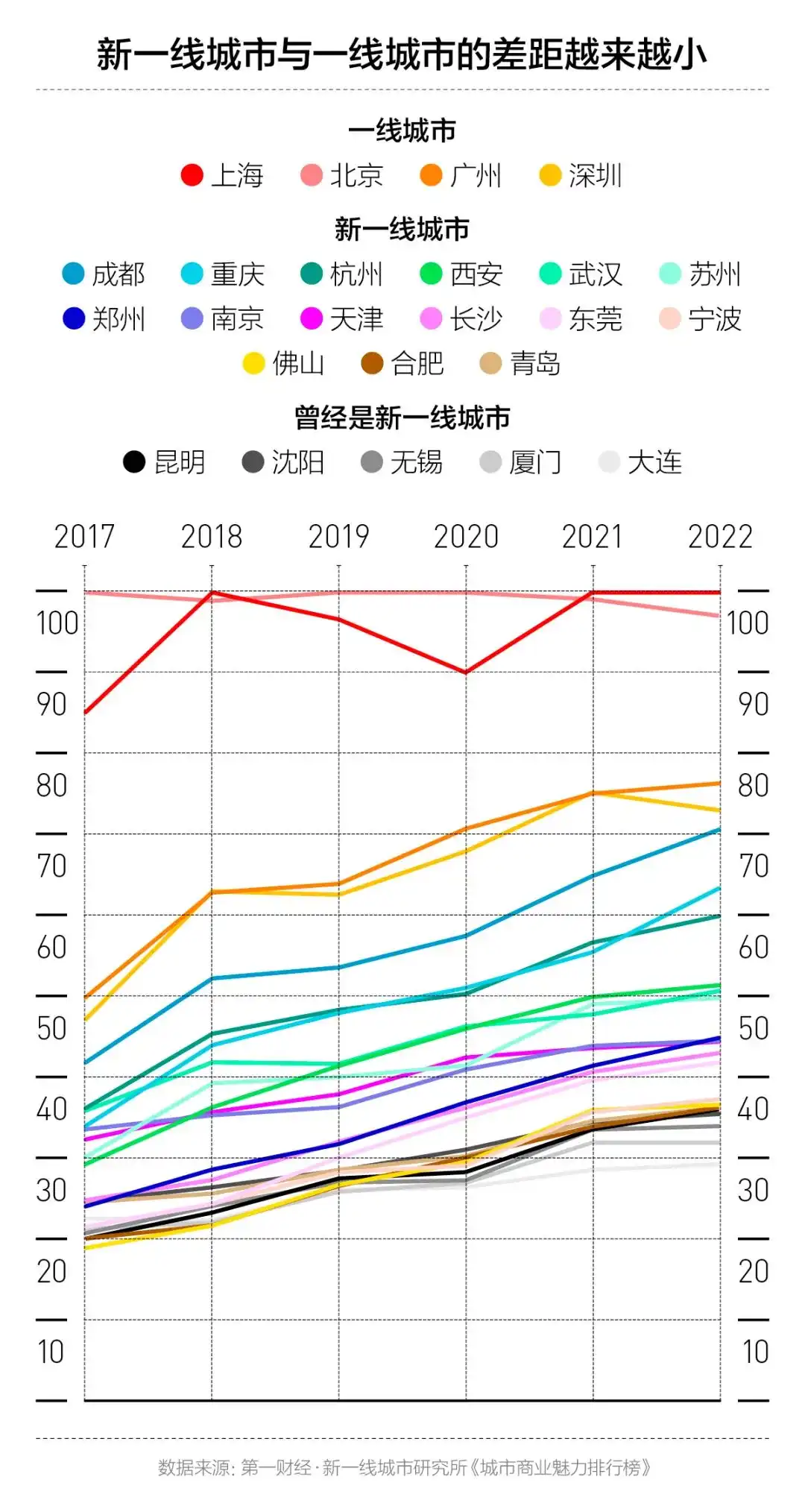
讨论任何一种创新,最终都无法回避文化问题。即使是相似商业基础的城市,最终能否转化成“新消费之城”,还需要孕育它的土壤——整座城市的气质来提供养料。已经被成功验证的新消费之城,城市气质中都带有鲜明的开放意识和创新特征。独特的城市气质也会在当下的文旅市场形成更强的吸引力。新消费的繁荣与城市文化层面的挖掘,构成新消费之城外来消费的两大抓手。 面子之外,核心产业链的枢纽链路,以及相关人才供给的里子是新消费之城崛起的根本支撑。近些年来诞生的新消费品牌,其品类分布情况与各产业带分部情况高度重合。相关行业人才供给也面临同样的情况,尤其是生产端的人才,如能与本地既有产业链重合,从0到1的过程就可大幅缩短。 The traction and stamina of new consumption on the comprehensive charm of the city新消费品牌的聚集,会进一步牵引出其他多个链条的城市吸引力抬升。 首先是商业上,主流消费品牌已经开始密切关注新消费品牌的动向,并将它们作为业务增长的新锚点,因此新消费品牌抱团创设、集中开店的城市,也会成为主流消费品牌下一步的拓展重心——这种全方位的商业资源能级提升,也会直接抬升城市在区域内的商业资源辐射能力。 年轻人的涌入也会同步持续发生,不仅仅是短期旅游到访的消费者,更重要的是城市长期对年轻人吸引力的提升与巩固。 尤其是消费领域成功的创业经验和持续运营的人才需求,都会鼓励更多年轻人在当地寻找发展机会——无论是自己探索创业的可能性,还是参与到具体的品牌经营过程中,他们都愿意将自己长期发展的未来与城市的命运绑定在一起。

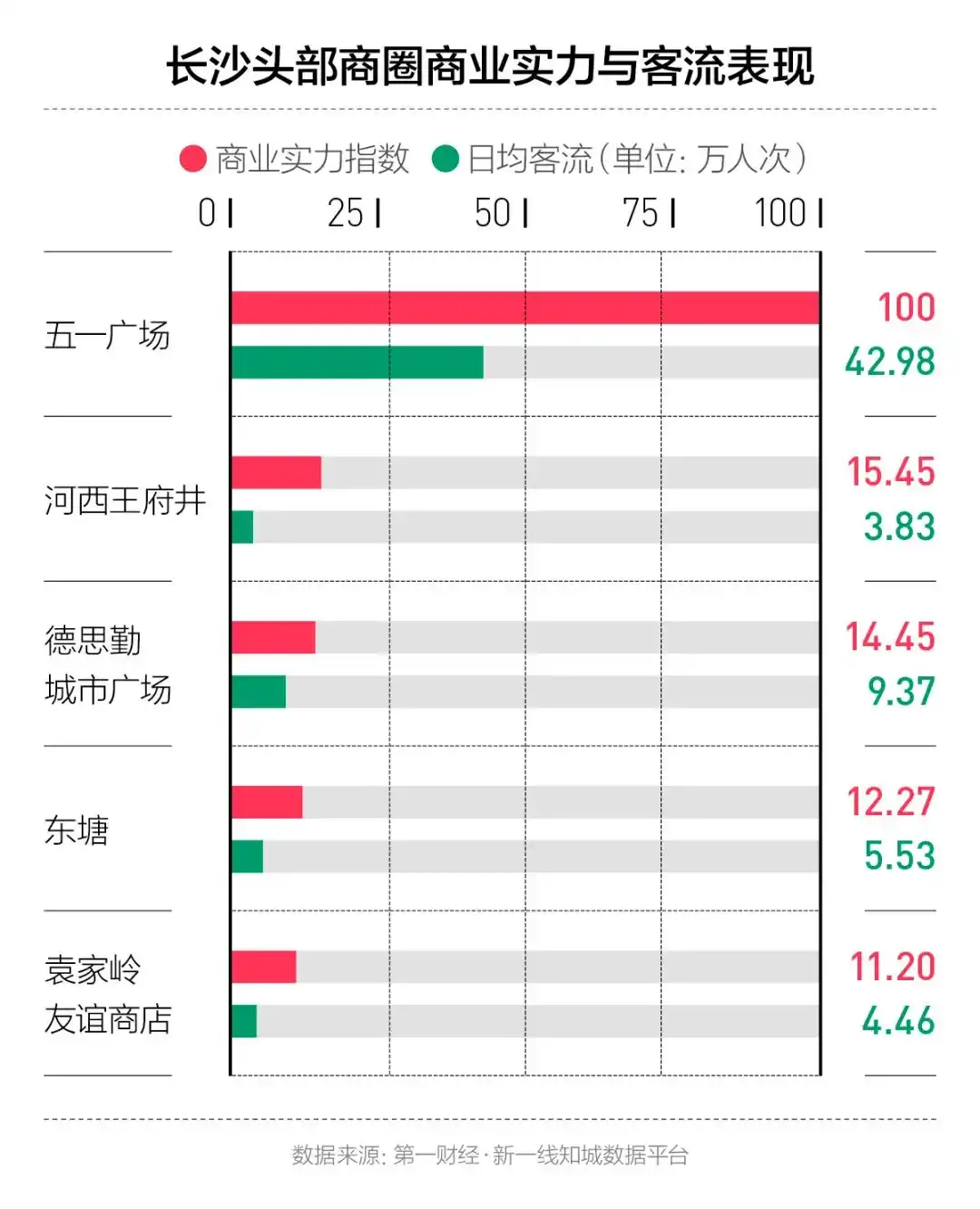
最终受益的是城市产业的繁荣。在过去10年中国的城市发展进程中,城市新兴产业特色往往能够拉动城市整体魅力的提升。作为国民经济中占据重要地位的行业,又与人们日常生活密切相关,大消费行业的兴盛也同样能够助力城市整体繁荣。尤其是它不仅带动的是本行业的生产、供应、流通和人才发展,同时也能影响到诸如文化旅游、交通物流、夜间经济等诸多领域,并提升城市美誉度和全行业的人才吸引力。 New consumption cities need to continue to support consumption innovation 消费创新能够从根本上推动一座城市的商业繁荣。但对于大多处于初创阶段的消费企业来说,维系和保护好脆弱的消费创新生态,是它们能够长期扎根和投入的一个重要动力。为此,从城市层面,已经成型的新消费之城也需要发挥政府的引导作用,持续支撑城市的消费创新与商业动能。 其中,通过有组织的创新社群发挥出品牌之间的合力、增加政策扶持激励,以及在城市层面更多引入外部资源,充分融入本地,为新消费品牌提供外脑和助力,都能更好支持消费创新的发生,也会同样帮助城市在行业整体影响力的提升。

The full report is about 28000 words. In order to have a better reading experience and gain in-depth industry insight, it is still recommended to read the full version of the "2023 China New Consumption White Paper".
Full version of pdf Add official WeChat to get
Official WeChat Official Public Account
